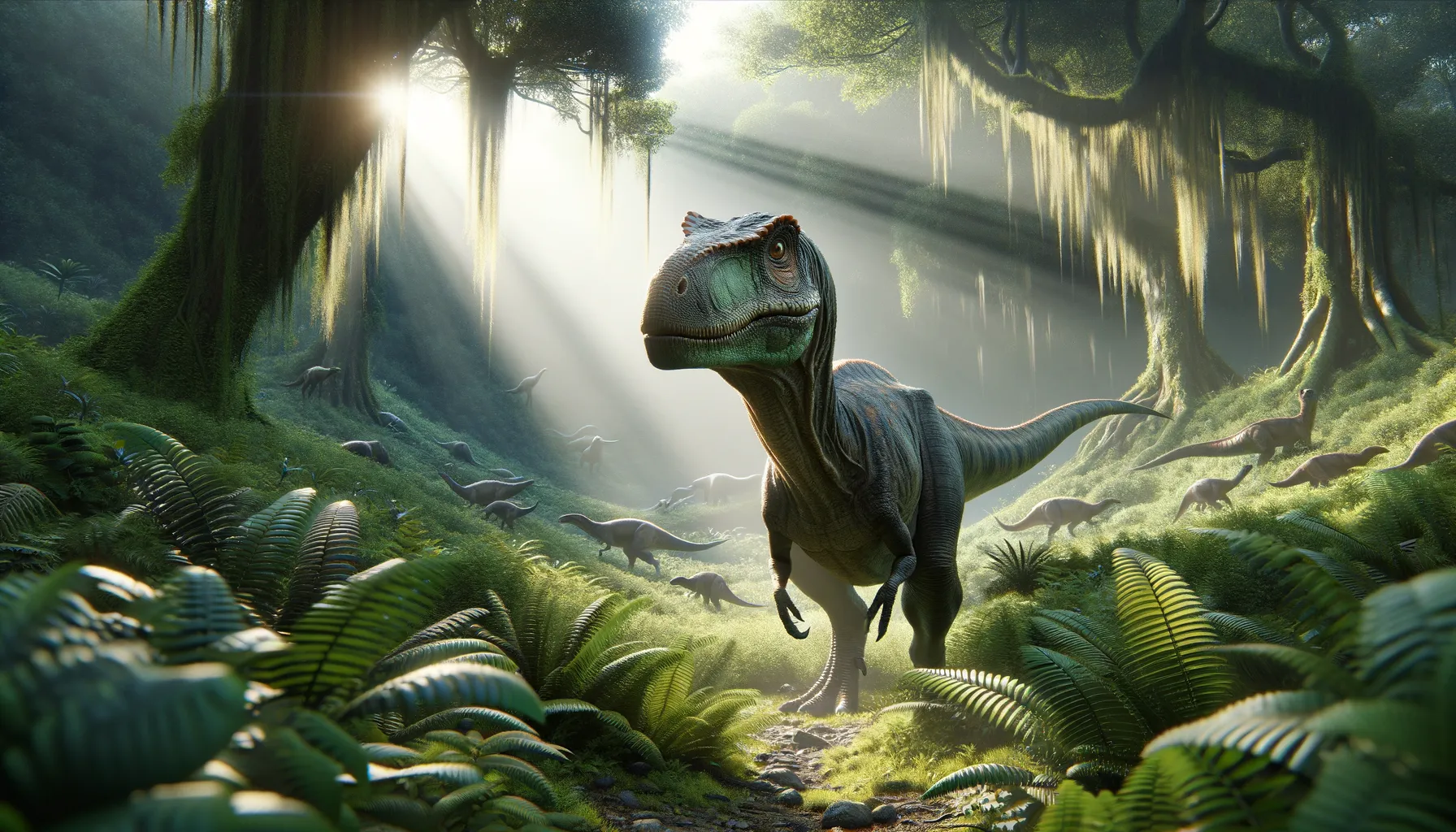
Bactrosaurus
An early duck-billed herbivore.
Period
Cretaceous
Length
Roughly 6 meters long.
Height
Approximately 2 meters tall at the hips.
Weight
Around 1,100 to 1,500 kg.
Bactrosaurus was an early hadrosaur, known as a 'duck-billed' dinosaur due to its distinctive snout. It lived during the Cretaceous period and was one of the earliest of the hadrosaurs. This herbivore is believed to be a transitional species showing both primitive and advanced features within its group. Fossils of Bactrosaurus have provided key insights into the evolution of later duck-billed dinosaurs.
Diet
Bactrosaurus was a herbivore, primarily feeding on the abundant plant life of its time. Its diet likely consisted of conifer leaves, seeds, and possibly ferns. Its dental structure allowed it to grind down tough plant material.
Hunting
As a herbivore, Bactrosaurus did not hunt other animals. It foraged for its food, possibly moving in herds to feed on vegetation. Foraging strategies might have included seeking out low-lying plants and using its bill to clip vegetation.
Environmental challenges
Bactrosaurus faced environmental challenges such as changing climates and habitat conditions during the Cretaceous. Competition for food resources with other herbivores was likely a significant challenge. Predation was also a threat, requiring Bactrosaurus to rely on its size and possibly herd behavior for protection.
Speed
Slow-moving, due to its large size.
Lifespan
Estimated to live around 25 to 30 years.
First discovery
Found in China in the late 1930s.
Fun Facts
- Bactrosaurus means 'club lizard' due to the club-like ridges on its back.
- It lived around 95 million years ago during the Late Cretaceous period.
- Bactrosaurus was an herbivore that likely fed on the lush vegetation of its time.
- It was a medium-sized dinosaur, about 6 meters long, making it quite agile for its size.
- Bactrosaurus fossils have been found mainly in what is now China and Mongolia.
- It is considered one of the earliest known hadrosaurs, or 'duck-billed' dinosaurs.
- Bactrosaurus is known for its powerful hind limbs, suggesting it could run fast to escape predators.
Growth and Development
Bactrosaurus went through various stages of growth, with juveniles likely having different physical characteristics than adults. It experienced rapid growth spurts to achieve its large adult size. Growth rings in bone fossils suggest periods of fast and slow growth, possibly linked to environmental conditions.
Habitat
Bactrosaurus inhabited floodplains and forested areas, with access to ample vegetation. Its environment was rich in plant diversity, with a landscape that included rivers and wetlands. These habitats provided shelter and resources essential for its survival.
Interaction with other species
Bactrosaurus interacted with a variety of contemporary dinosaur species, including predators. Its presence in herds might have been a strategy for deterring predators. These interactions were part of a complex ecosystem where multiple species coexisted, each fulfilling a niche.
Natural lifespan
In favourable conditions, Bactrosaurus could naturally live up to 30 years.
Reproduction
Reproduction in Bactrosaurus involved laying eggs, likely in nests. Parental care might have been present, with adult dinosaurs protecting eggs and juveniles. The development of young Bactrosaurus inside eggs was crucial to species survival.
Social behaviour
Bactrosaurus likely exhibited some form of social behavior, possibly living in groups for added protection against predators. Such herd behavior could have facilitated communication and social interaction. This social structure might have influenced migration patterns and breeding.
Fossil locations
Fossils of Bactrosaurus have primarily been discovered in regions of Inner Mongolia, China. These fossils include skeletal remains that provide insight into its anatomy and lifestyle. The initial discovery in the 1930s paved the way for further paleontological studies in the area, revealing more about mid-Cretaceous ecosystems.
